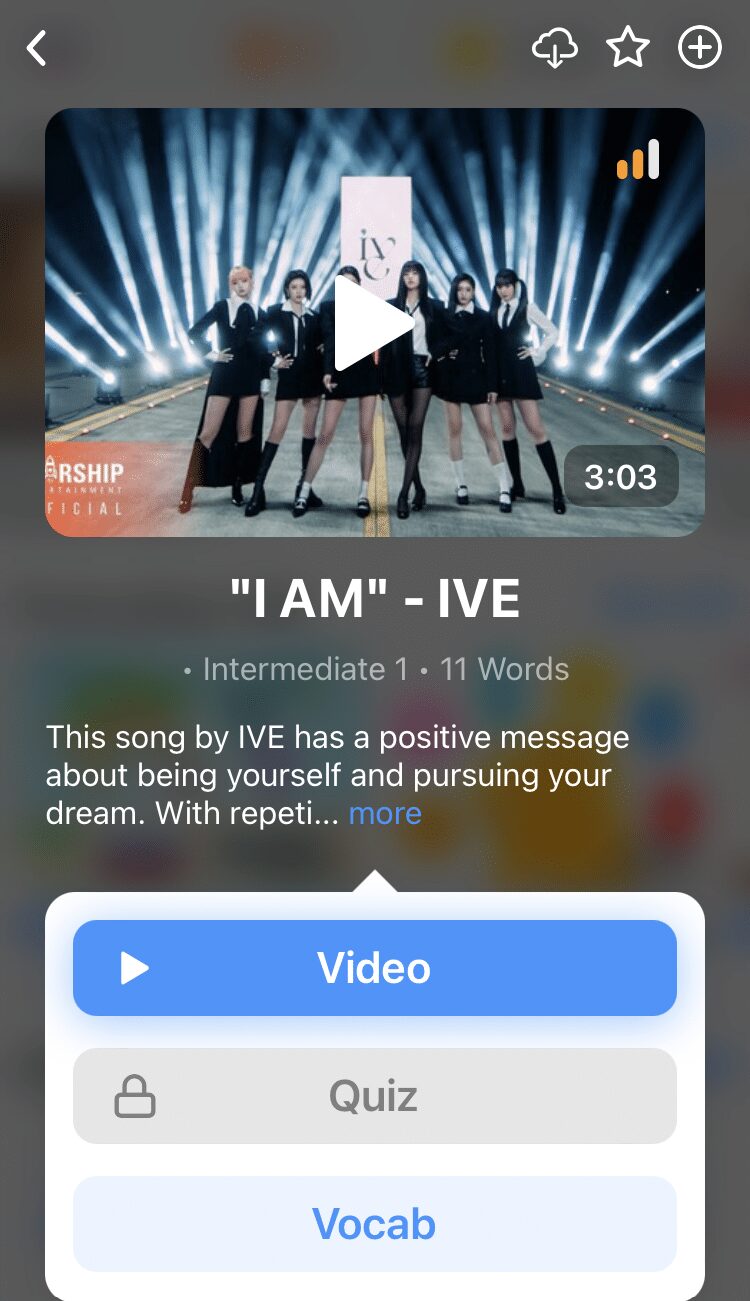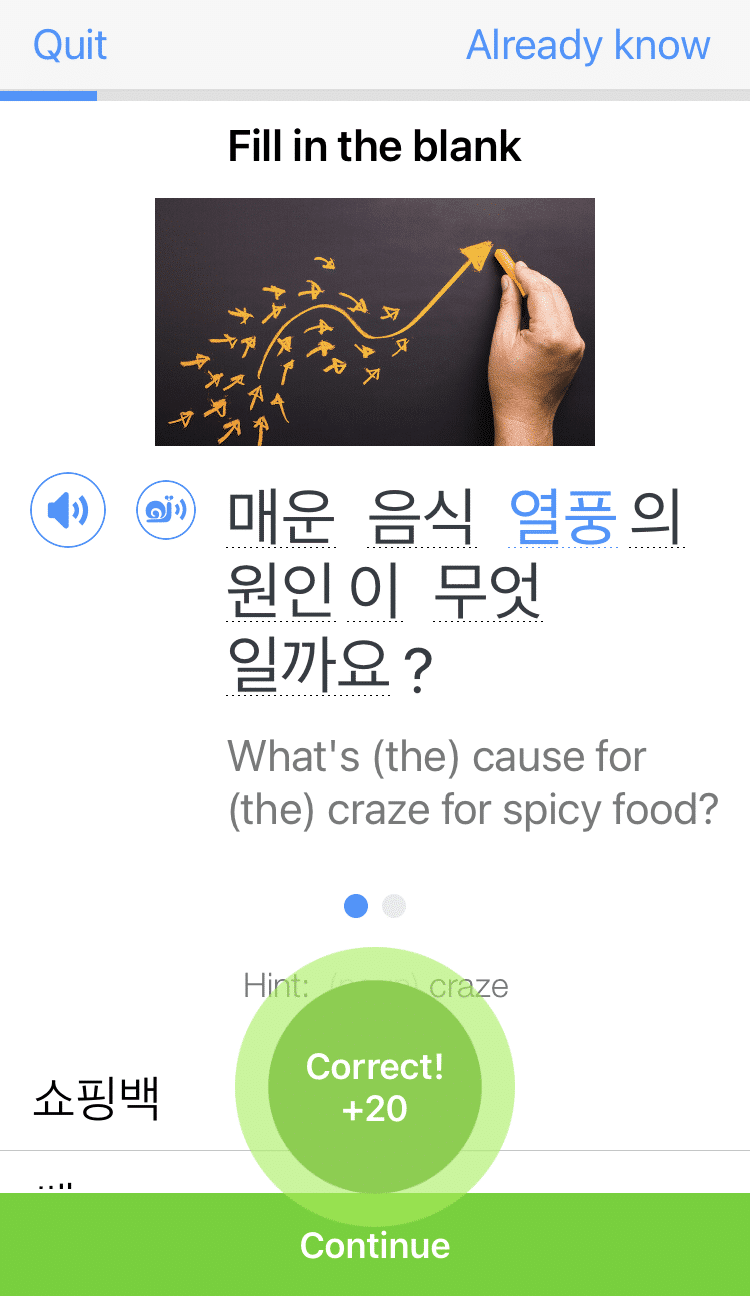The 84 Most Common Korean Adverbs

There are several major types that Korean adverbs fall into. These types describe the nature of the adverbs—how they’re usually derived, what their endings are and, sometimes, what they’re used to modify.
In this guide, I’ll explain what adverbs are, how to form them, and provide a list of 84 of the most common Korean adverbs so you can start using them.
Download: This blog post is available as a convenient and portable PDF that you can take anywhere. Click here to get a copy. (Download)
What Are Korean Adverbs?
As mentioned earlier, adverbs are words that describe verbs, adjectives and other adverbs. In Korean, they’re known as 부사 .
Many English adverbs are made by combining an adjective with the suffix of “-ly” [strongly, badly, sourly, loudly, etc]. Many Korean adverbs are formed in a similar fashion and are also distinguishable by certain endings.
And yes, you read that right: endings.
The Korean adverb-making process is a bit finicky and will require you to be mindful of which word you’re aiming to transform. Based on what it is, you’ll have to decide on a specific ending.
You can’t be willy-nilly about the endings either. Using the wrong ending can lead to inaccurate and unintelligible speech, which you certainly don’t want to engage in!
There are also, of course, some words that just exist as adverbs, no ending conjugation required.
How to Form Adverbs in Korean
Korean Adverbs That End in 게
Many common Korean adverbs share the ending 게.
These adverbs are typically derived from Korean adjectives that end in 다. All that’s done to convert them to adverbs is substituting 다 with 게.
To clarify, Korean adjectives in a neutral state may translate succinctly into verb-like phrases. For example, 맛있다 means “delicious” but when translated very literally, it means “it has taste.” However, it’s still considered an adjective, as it’s describing the state of something.
So the magic that’s done to create adverbs is, quite simply, giving the stem of the adjective a new ending. And that’s it!
You can think of 게 as the equivalent to the “-ly” seen at the end of English adverbs.
By the way, you may have wondered where Korean adverbs belong in a sentence. I have great news—in most cases, it doesn’t really matter where the adverb goes, so long as it’s not at the end of the sentence!
Any kind of freedom like this is like a big sigh of relief for language learners. Take a moment to celebrate!
Korean Adverbs That End in 히
These adverbs take on the ending 히 instead of 게. They’re also derived a little differently.
히-ending adverbs are typically formed from verbs that end in 하다. That ending is then substituted with 히 to create an adverb. If the adjective stem happens to end with the consonant ㄹ, then you would use the suffix 리 instead.
Why 리? The consonant ㅎ is a bit like the silent consonant ㅇ in that its soft in its pronunciation. It can thus lose a bit of its “power” when put next to a more strongly-pronounced consonant, like ㄹ. So for example, as opposed to saying 멀히 , saying 멀리 rolls off the tongue much more smoothly.
And while we wish everything followed rules to a tee, there are some exceptions! Not all 히-ending adverbs are derived from 하다 adjectives.
But what does stay the same is the placement of adverbs. Again, you’re free to push them around in a sentence, just don’t shove them to the end!
대단히 고맙습니다 – Thank you so much / Thank you greatly
그릇이 완전히 비어있다 – The bowl is completely empty
빨리 가자 – Let’s go quickly
Korean Adverbs That End in 으로
으로-ending adverbs are typically derived from adjectives that are created from nouns. Sounds confusing, but let me explain.
Korean nouns can become an adjective when 적 is attached to its end. So, for example, the noun “miracle” in Korean is 기적. Adding 적 to the end creates the adjective 기적적, meaning “miraculous.” Finally, adding 으로 to that creates the adverb 기적적으로, meaning “miraculously.”
Nouns that can transform into adjectives in this manner typically become 으로-ending adverbs. Sometimes, the adjective-forming 적 may be excluded in the transformation to adverbial form.
These adverbs can also be a bit lengthy or “complex.” Learn these to add an air of sophistication to your Korean!
나는 본능적으로 멀어졌다 – I instinctively moved away
개가 기적적으로 살았습니다 – The dog miraculously lived
좀 더 구체적으로 말씀해 주시겠어요? – Could you be more specific?
Korean Adverbs That Are Naturally Adverbs
Maybe they’re born with it. Maybe it’s—no, they’re just born with it.
There are also Korean adverbs that don’t really follow any set conjugation rule. Rather, they naturally exist in an adverbial state, as opposed to being derived from an existing adjective or verb.
Since there isn’t a special quirk to recognize, you’ll just have to memorize these kinds of adverbs. I know, it sounds like a bit of a chore, but it shouldn’t be so bad. Many of these adverbs are very frequently used, so they’re more likely to stick in your brain.
Besides that, these adverbs still have the same placement freedom as the others.
소리가 갑자기 멈췄다 – The sound suddenly stopped
아주 매워요 – It’s very / quite spicy
반찬이 많이 있어요 – There are a lot of side dishes
One way to help memorize all the different kinds of Korean adverbs is to use a language learning program such as FluentU.
FluentU takes authentic videos—like music videos, movie trailers, news and inspiring talks—and turns them into personalized language learning lessons.
You can try FluentU for free for 2 weeks. Check out the website or download the iOS app or Android app.
P.S. Click here to take advantage of our current sale! (Expires at the end of this month.)
Adverbs of Frequency
To get you started on your adverb vocabulary, let’s break down some of the most useful Korean adverbs into different categories.
Within the lists below, keep an eye out for those distinguishable adverb endings we’ve discussed. Be mindful also of the many adverbs that won’t have such endings.
We’ll start first with adverbs of frequency, called 빈도 부사 in Korean. These describe how often an activity is done.
- 항상 – always
- 매년 – annually
- 매일 – daily
- 매시 – hourly
- 절대 – never
- 밤마다 – nightly
- 종종 – occasionally
- 드물게 – rarely
- 자꾸 – repeatedly
- 가끔 – sometimes
- 보통/평소에 – usually
- 주간 – weekly
Adverbs of Time
시간 부사 , adverbs of time, describe the “when” of an activity, whether it has happened or is expected to happen.
Make sure not to get them confused with adverbs of frequency, which focus on how often something occurs and implies intervals. Adverbs of time more often describe “one-and-done” actions.
- 기후 – afterward
- 벌써 – already
- 일찍 – early
- 결국 – eventually
- 바로 – immediately
- 늦은 – late
- 최근에 – lately
- 나중에 – later
- 지금 – now
- 곧 – soon
- 아직도 – still
- 그때 – then
- 오늘 – today
- 내일 – tomorrow
- 오늘밤 – tonight
- 어제 – yesterday
- 아직 – yet
Adverbs of Place
Known as 장소 부사 , adverbs of place describe the “where,” expressing the general location or movement in which an activity is performed.
- 위에 – above
- 떨어져 – away
- 뒤에 – back, behind
- 뒤로 – backwards
- 아래에 – below
- 아래층으로 – downstairs
- 모든 곳 – everywhere
- 멀리 – far
- 여기 – here
- 안에 – inside
- 인근에 – nearby
- 아무데도 – nowhere
- 바깥에 – outside
- 저기에/거기에 – there
- 위층으로 – upstairs
Adverbs of Manner
양태 부사 are adverbs of manner. These describe the way in which something is done–in other words, the “how.” It’s this category of adverbs that you’ll likely have the most fun using and making!
- 화나게 – angrily
- 심하게 – badly
- 아름답게 – beautifully
- 대담하게 – bravely
- 바쁘게 – busily
- 귀엽게 – cutely
- 위험하게 – dangerously
- 맛있게 – deliciously
- 쉽게 – easily
- 같이 – equally/together
- 부드럽게 – gently
- 유쾌하게 – happily
- 거의 – hardly
- 건강하게 – healthily
- 운좋게 – luckily
- 시끄럽게 – noisily
- 완벽하게 – perfectly
- 빨리 – quickly
- 조용하게 – quietly
- 진지하게 – seriously
- 수줍게 – shyly
- 간단히 – simply
- 천천히 – slowly
- 강력하게 – strongly, powerfully
- 감사히 – thankfully
- 아주 – very
- 약하게 – weakly
- 잘 – well
Adverbs of Degree
정도 부사 are adverbs of degree. They describe the “how much” of an activity or a quality.
- 거의 – almost
- 간신히 – barely
- 완전히 – completely
- 충분히 – enough
- 극도로 – extremely
- 충분히 – fully
- 대단히 – greatly
- 대부분 – mostly
- 부분적으로 – partially
- 꽤 – quite
- 약간 – slightly
- 매우/너무 – very
Over time, you’ll notice that adverbs aren’t too hard to pick out in Korean sentences. Hopefully, this guide will make the process of identifying adverbs even easier.
And One More Thing...
If you enjoyed this post, you're already halfway to having the time of your life learning Korean with FluentU!
FluentU makes it possible to learn with K-pop videos, funny commercials, entertaining web series and more. Just a quick look will give you an idea of the variety of FluentU videos on offer:

FluentU really takes the grunt work out of learning languages, leaving you with nothing but engaging, effective and efficient learning. It's already hand-picked the best videos for you (which are organized by level and topic), so all you have to do is simply choose any video that strikes your fancy to get started.
Each word in the interactive captions comes with a definition, audio, image, example sentences and more.

Access a complete interactive transcript of every video under the Dialogue tab, and easily review words and phrases from the video under Vocab.

You can use FluentU’s unique Quiz Mode to learn the vocabulary and phrases from the video through fun questions.

FluentU keeps track of what you're learning, and tells you exactly when it's time for review, giving you a 100% personalized experience.
Review sessions use video context to help embed the words in your memory.
Start using the FluentU website on your computer or tablet or, better yet, download the FluentU app from the iTunes or Google Play store. Click here to take advantage of our current sale! (Expires at the end of this month.)








